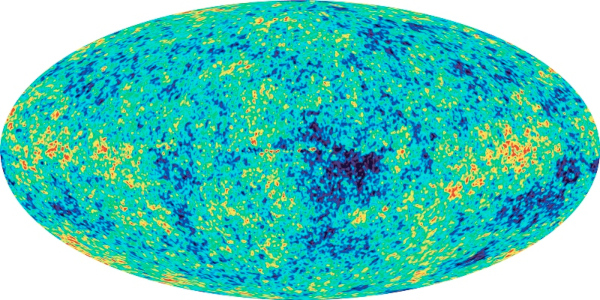
When we observe galaxies, galaxy clusters, or the cosmic microwave background, one thing is clear to cosmologists: the laws of gravity are not sufficient to explain the observations. However, visible matter, which makes up stars, planets, and ourselves, accounts for only 4.9% of the universe. The remaining 95.1% consists of two invisible and mysterious entities: dark matter and dark energy.
| Component | Proportion | Physical Nature | Detection Method |
|---|---|---|---|
| Baryonic Matter | 4.9% | Atoms, plasma, dust | Emission, absorption, visible light, X-rays |
| Dark Matter | 26.8% | Unknown (WIMPs? axions? neutrinos?) | Gravitational effects (slowness of galactic rotation speeds, gravitational lenses) |
| Dark Energy | 68.3% | Unknown (quantum vacuum? cosmological constant?) | Acceleration of cosmic expansion, Type Ia supernovae |
Source: ESA Planck Mission, 2018 Results.
Inferred from galactic rotation and cluster dynamics, dark matter accounts for about 26.8% of the total energy of the universe. It does not emit, absorb, or reflect light. Its presence is only betrayed by its gravitational effects, such as the abnormal slowness of the decrease in the speed of stars with distance from the galactic center. Various hypotheses have been proposed: massive neutrinos, axions, WIMPs (Weakly Interacting Massive Particles), but no candidate has been detected to date.
The lack of direct detection of dark matter stimulates a variety of theoretical models, ranging from supersymmetric particles to extensions of the gravitational field. These hypotheses seek to explain its properties: gravitational but not electromagnetic, massive but not visible.
| Candidate | Nature | Theoretical Origin | Experimental Status |
|---|---|---|---|
| WIMPs | Weakly Interacting Massive Particles | Supersymmetry (SUSY), neutralinos | Not detected (XENONnT, LUX-ZEPLIN) |
| Axions | Very light, pseudoscalar particles | Peccei-Quinn theory, QCD | Ongoing searches (ADMX, MADMAX) |
| Sterile Neutrinos | Inert neutrinos interacting only through gravity | Extension of the Standard Model | Not confirmed, but compatible with certain anomalies |
| Self-Interacting Dark Matter (SIDM) | Particles that annihilate or scatter among themselves | Galactic structure models | Tests on cluster density profiles |
| Ultralight Dark Matter (Fuzzy DM) | Bosons with mass ~\(10^{-22}\) eV | Cosmological Bose-Einstein condensate | Effects on large-scale halos |
| MACHOs | Non-luminous compact astrophysical objects | Black holes, brown dwarfs, dead stars | Ruled out for most of the dark matter (microlensing) |
| MOND / TeVeS | Modifications of Newtonian dynamics | Alternative theories to dark matter | Inability to reproduce gravitational lenses |
| Hidden Sector Dark Matter Particles | Particles interacting via non-standard forces (e.g., dark photons) | Extensions of the Standard Model, sometimes from string theory | Very weak interactions with our sector, ongoing indirect searches |
| Primordial Black Holes (PBH) | Black holes formed during the inflationary era | Inflation models with local density fluctuations | Gravitational microlensing, gravitational waves (LIGO/Virgo) |
| Mirror Matter | Replica of the Standard Model in a mirror sector | Inspired by \(\mathbb{Z}_2\) symmetry, respect for parity | Potentially detectable via neutrino oscillations or thermal effects |
Sources: Bertone & Tait (2018), LUX-ZEPLIN Collaboration (2022), Fuzzy Dark Matter Review (2020).
Indirectly discovered by the study of Type Ia supernovae in the 1990s, dark energy would account for 68.3% of the universe. It would be responsible for the acceleration of cosmic expansion, like a form of cosmic antigravity. Modeled by the cosmological constant \(\Lambda\) in Einstein's equations, it defies our understanding of quantum fields and the vacuum itself. The density of this energy seems to remain constant over time, which makes its origin deeply enigmatic.
Dark energy is one of the major mysteries of cosmology. Several models seek to explain its repulsive effect on the expansion of space, either as an intrinsic property of the vacuum or as a manifestation of a deeper or geometric dynamic of the universe.
| Model | Description | Component (\(w\)) | Experimental Tests |
|---|---|---|---|
| Cosmological Constant (\(\Lambda\)) | Vacuum energy, constant density | \(w = -1\) | Agreement with Planck, SDSS, SN Ia data |
| Quintessence | Dynamic scalar field with slow potential | \(-1 < w < -\frac{1}{3}\) | Euclid, DESI, LSST projects |
| Phantom Energy | Negative energy field | \(w < -1\) | Would lead to the Big Rip scenario |
| k-essence | Scalar field with non-standard kinetics | Variable, depends on dynamics | Predictions for Euclid and LSST |
| Modified Gravity (f(R), DGP...) | Modification of general relativity on large scales | No defined \(w\) (geometric effect) | Tests on the formation of large structures |
| Cosmological Backreaction | Emergent effect of gravitational inhomogeneities | No fluid, but average geometry | Very difficult to model, no consensus |
| Emergent Dark Energy (Entropic Gravity) | Gravity and acceleration as thermodynamic phenomena | No classical \(w\) | Speculative theory, without precise predictions |
| Holographic Models (HDE) | Dark energy arises from a holographic principle on information density | \( w \approx -1 \), depends on the cosmological radius | Tests on CMB, structure formation, upcoming LSST |
| Dark Vector Fields | Dynamic vectors responsible for the acceleration of expansion | \( w(t) \) variable according to the field | Testable models by anisotropies of the diffuse background |
| Delayed Interaction Theories | The effect of matter on the geometry of spacetime is not instantaneous | No fluid, memory or delayed effect of ordinary matter | Speculative hypothesis, difficult to test experimentally |
Sources: Copeland et al. (2006), ESA Euclid, Verlinde (2011) – Gravity as an Emergent Phenomenon.